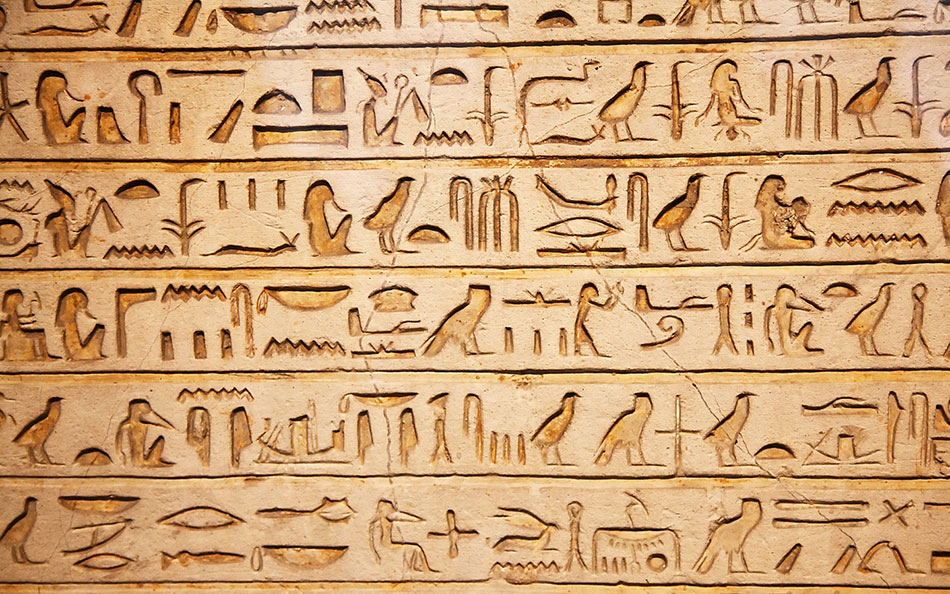
Are emojis a return to hieroglyphs?
In Blacksburg and among Hokie alumni, a lot of buzz surfaced when Virginia Tech launched a series of emojis at the end of April. What are we to make of these pictograms that the majority of us increasingly employ in our electronic communication? Such newspapers as the Guardian and such magazines as Wired have suggested that emojis are a new kind of language, perhaps akin to the hieroglyphs of ancient Egypt. Could this be true?

Linguistics expert Joseph F. Eska is a professor in the Department of English.
However much such a thought might appeal to some of us, the use of emojis is actually quite limited. They mostly function as indicators of how we feel, or they're simply used for fun. People who are close might establish a private code system of emojis, just like twins sometimes establish a private language between themselves, but the code is always limited in scope.
The use of emojis, then, can be compared to certain kinds of nonhuman animal communication, which generally has specific purposes. Bees are known to dance to inform the hive of the location of a food source, but the dance cannot express any other kind of information. Birdsong indicates location and conveys warnings and has a function in sexual selection, but the songs cannot express any other kind of information. This is not language in the human sense.
What of hieroglyphs? They are not a language, but a system that evolved over time to record the ancient Egyptian language in physical form. First of all, hieroglyphs were logograms, a sign or character that represented a word or phrase. For example, the mouth-shaped symbol stood for the word "mouth," which was pronounced "r" (hieroglyphs do not record vowel sounds, just as many scripts in use today in the Middle East do not). The use of the mouth-shaped symbol, then, represented the sound "r" — that is, the shape acted as a phonogram, a symbol representing a vocal sound. Since the word for "towards" was pronounced the same way as the word for "mouth" in ancient Egyptian, the mouth-shaped symbol came to be used to spell the word for "towards" — that is, "mouth" and "towards" were homonyms in ancient Egyptian, just like the numeral "four" and the preposition "for" in contemporary English.
stood for the word "mouth," which was pronounced "r" (hieroglyphs do not record vowel sounds, just as many scripts in use today in the Middle East do not). The use of the mouth-shaped symbol, then, represented the sound "r" — that is, the shape acted as a phonogram, a symbol representing a vocal sound. Since the word for "towards" was pronounced the same way as the word for "mouth" in ancient Egyptian, the mouth-shaped symbol came to be used to spell the word for "towards" — that is, "mouth" and "towards" were homonyms in ancient Egyptian, just like the numeral "four" and the preposition "for" in contemporary English.
Another example is the wave-shaped logogram , which represented the word "water" and was pronounced "n." But the wave-shaped logogram could also be a phonogram to spell the word for "for" because it was pronounced as "n." Once hieroglyphs became a way to spell sounds, they could be combined to spell larger words. Thus the combination
, which represented the word "water" and was pronounced "n." But the wave-shaped logogram could also be a phonogram to spell the word for "for" because it was pronounced as "n." Once hieroglyphs became a way to spell sounds, they could be combined to spell larger words. Thus the combination spelled "rn," the ancient Egyptian word for "name."
spelled "rn," the ancient Egyptian word for "name."
This process may seem cumbersome, but hieroglyphs allowed ancient Egyptians to compose numerous kinds of texts: literary and mythological tales, histories and chronicles, religious hymns, scientific treatises and legal and medical texts, poems and songs, personal letters and biographies, even graffiti. They wrote about anything that was important to them, just like we English speakers leverage the Roman alphabet today. And that is why emojis are not a new language — or anything like hieroglyphs. 
